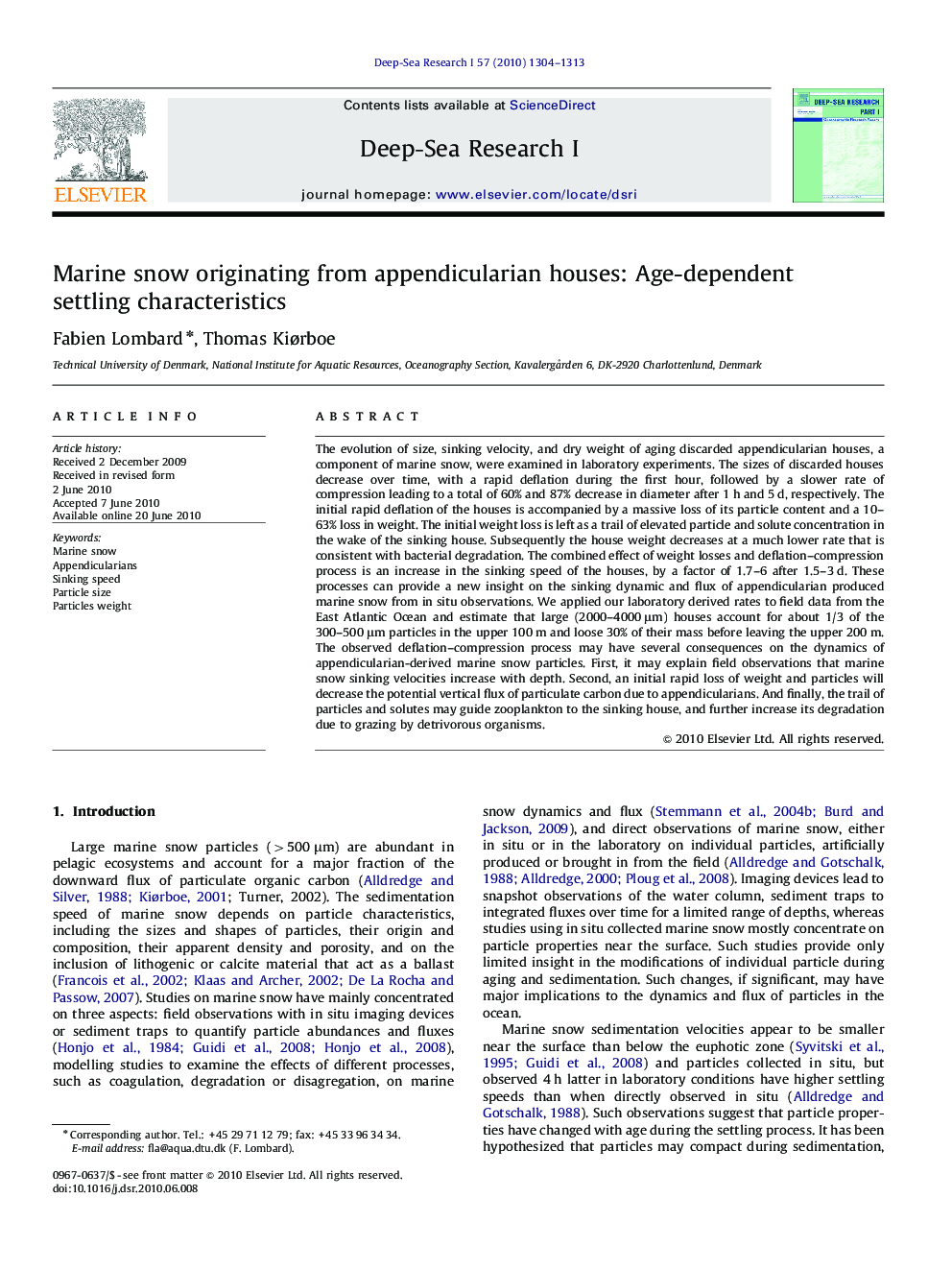| Article ID | Journal | Published Year | Pages | File Type |
|---|---|---|---|---|
| 4535286 | Deep Sea Research Part I: Oceanographic Research Papers | 2010 | 10 Pages |
The evolution of size, sinking velocity, and dry weight of aging discarded appendicularian houses, a component of marine snow, were examined in laboratory experiments. The sizes of discarded houses decrease over time, with a rapid deflation during the first hour, followed by a slower rate of compression leading to a total of 60% and 87% decrease in diameter after 1 h and 5 d, respectively. The initial rapid deflation of the houses is accompanied by a massive loss of its particle content and a 10–63% loss in weight. The initial weight loss is left as a trail of elevated particle and solute concentration in the wake of the sinking house. Subsequently the house weight decreases at a much lower rate that is consistent with bacterial degradation. The combined effect of weight losses and deflation–compression process is an increase in the sinking speed of the houses, by a factor of 1.7–6 after 1.5–3 d. These processes can provide a new insight on the sinking dynamic and flux of appendicularian produced marine snow from in situ observations. We applied our laboratory derived rates to field data from the East Atlantic Ocean and estimate that large (2000–4000 μm) houses account for about 1/3 of the 300–500 μm particles in the upper 100 m and loose 30% of their mass before leaving the upper 200 m. The observed deflation–compression process may have several consequences on the dynamics of appendicularian-derived marine snow particles. First, it may explain field observations that marine snow sinking velocities increase with depth. Second, an initial rapid loss of weight and particles will decrease the potential vertical flux of particulate carbon due to appendicularians. And finally, the trail of particles and solutes may guide zooplankton to the sinking house, and further increase its degradation due to grazing by detrivorous organisms.
